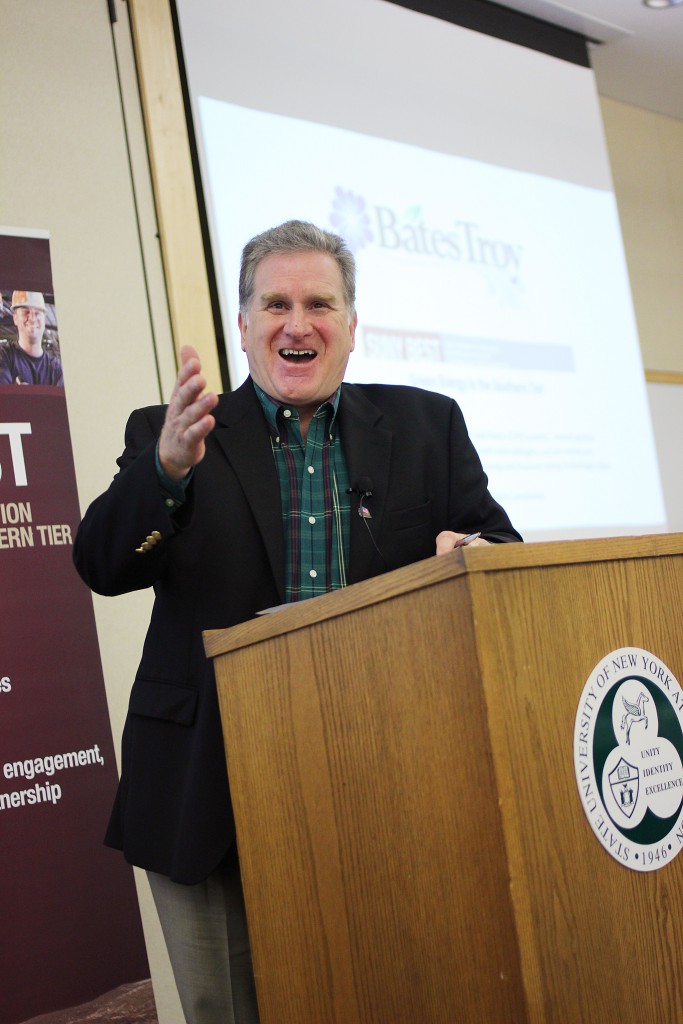
An emerging method of energy distribution could be both cheaper and more efficient than traditional methods, and it could better prepare communities for natural disasters.
This Thursday’s SUNY Business and Education Cooperative of the Southern Tier (BEST) brought businesspeople and community members together to discuss alternative energy strategies in the surrounding communities. Three speakers informed the audience about using combined heat and power (CHP), which uses alternative methods to provide energy for homes instead of using both electricity and natural gas.
The first speaker was Herbert Dwyer, president of Ithaca-based ASI Energy, which provides clean-energy solutions and services for commercial and industrial buildings. He discussed how CHPs and microgrids, a method that connects windmills, solar energy, power plants and water with cities, could empower communities to be self-sufficient and energy efficient.
Traditional power sources come from electricity or through a boiler, in which water is heated and pumped through pipes in the house. The steam leaves the building through the chimney, so when people pay their utility bills, they are paying for heat that escaped. Microgrids harness more efficient energy sources like thermal or solar power, allowing communities to reduce greenhouse gas emissions and lower costs. He said this system reduces wasted energy by nearly 40 percent.
“It’s just a really great way of using energy and becoming more resilient. Do you know what we’re paying for in our utility bill? We’re paying for the useless heat,” Dwyer said. “By utilizing CHP, we take that power plant and we put it right outside a building and instead of the heat going out stack, we take the heat and put it in the building.”
He added that though Binghamton University is looking at solar energy, they need to look at other fuel sources such as wind, thermal or geothermal energy that always keeps the power on, even when there is a lack of sunlight. This will help the city operate during floods and other disasters. According to Dwyer, creating a microgrid that combines solar energy with CHP, even within the campus, can make BU a reliable and resilient power provider.
Edward Arzouian, Compliance and Special Projects Manager at Bates Troy, a healthcare linen service, explained that his company uses CHP in its plant because it is more energy-efficient and saves them money. He said he hopes to work with Watson students interested in CHP.
Instead of only providing a backup source, the CHP generator runs at all times. Some energy comes from the electricity infrastructure that transfers the electricity from the power plants in NY to buildings, and some comes from capturing heat units to create hot water. He explained this method is ideal for hospitals, apartment buildings and hotels.
“Binghamton University is certainly the catalyst and provides a lot of brain power and research capability,” Arzouian said. “We would invite anyone who’s interested in how CHP works to come visit Bates Troy. We’re trying to spread the word a little bit.”
Regional Outreach Coordinator for NYS Energy Research and Development Authority (NYSERDA) Michael Strait said that using CHP generators reduces fossil fuels and can help low-income families afford enough energy, as it saves about $1600 a month, according to Arzouian.
“We’re hoping that BU will come up with some products that we will be able to market and have manufactured in the Southern Tier,” Strait said. “As well as concepts for clean energy technology.”


